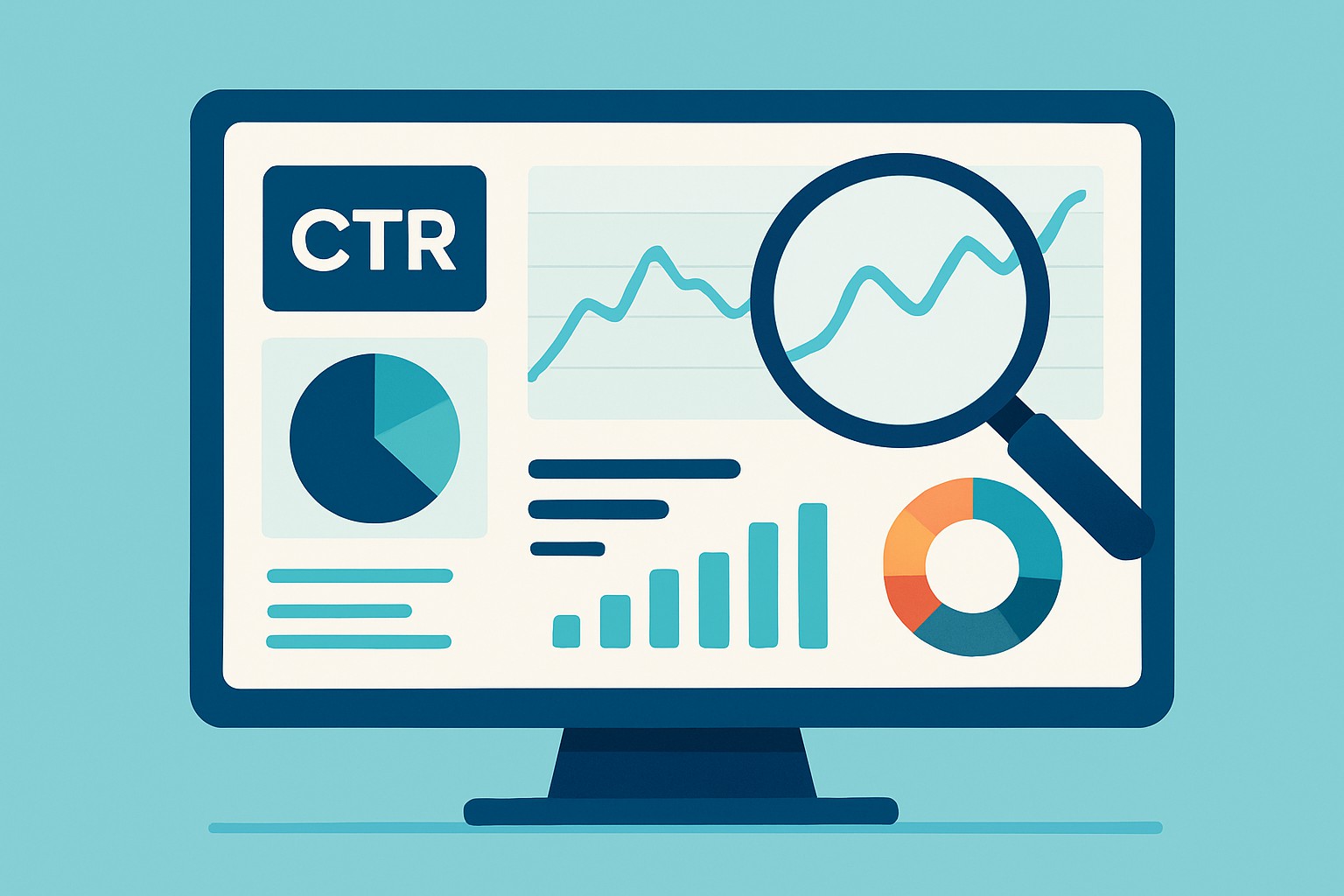
B2B Digital Marketing Benchmarks You Need
Master essential B2B digital marketing benchmarks with this comprehensive guide, empowering you to m...

Click Through Rate (CTR) is a digital metric that shows how often individuals click on specific links, ads or search results compared to how many times they appear on screen. But here’s the kicker: click through rate manipulation - tampering with these rates to make marketing victories look bigger - tends to get a bad rap and is often misunderstood.
CTR basically shows the percentage of people who click on a link after spotting it. For instance, if 100 individuals see a link or an ad and 5 decide to click, the CTR is 5%. It’s handy to keep in mind the difference between "impressions" which track how many times the link pops up and "clicks" which count how many times it’s clicked.
Click through rate manipulation basically means fiddling with the CTR metric to make performance appear shinier or dimmer than it actually is. Sometimes this is done on purpose—to pull the wool over someone's eyes—while other times it’s just a happy accident caused by tracking glitches or unexpected outside factors. There are plenty of ways and reasons to tinker with CTR, which is why it ends up being a rather tangled topic in digital analytics.
People often try all sorts of tricks to game click through rates, some more elaborate and risky than others. You’ve got everything from those infamous human click farms to sneaky automated bots, not to mention the classic misleading ads that make you scratch your head. These maneuvers can really throw off genuine analytics and chip away at user trust, which is no small thing.
Click farms and paid click networks rely on real people paid to click links repeatedly, creating fake engagement that comes from actual humans.
Bots and automated software crank out clicks by the bucketload without any fingers involved and rapidly inflate those CTR numbers.
Sneaky titles, thumbnails or ad creatives lure users into clicking under false pretenses and jack up CTR without real interest.
Incentivized clicks offer rewards or cash which can throw off the true picture of engagement.
Click spamming bombards a link with random bot-driven clicks—think scripts or malware working overtime—to mess with analytics or boost those metrics artificially.
| Method | How it Works | Sophistication Level | Risks Involved | Detection Methods |
|---|---|---|---|---|
| Click Farms | People hired to click repeatedly | Medium | Can get pricey and might tank your reputation if caught | Digging into traffic sources; keeping an eye on IP addresses |
| Bot Traffic | Automated programs creating fake clicks | High | Could land you in hot water with platform bans and IP blocks | Watching for odd behavior patterns; throwing CAPTCHA challenges at them |
| Deceptive Creatives | Using misleading titles or images to lure clicks | Low | Risks annoying users and wrecking your brand’s trust | Noticing dips in engagement; giving content a careful once-over |
| Incentivized Clicks | Offering rewards for clicks on ads or links | Medium | Might open the door to fraud claims or penalties from ad platforms | Spotting weird click patterns; sniffing out reward abuse |
| Click Spamming | Using scripts or malware to pump out random clicks | Low to Medium | Can mess up your data and send your campaigns off track | Picking up on anomalies; filtering out shady traffic |
The reasons behind CTR manipulation often stem from the intense pressure marketers and businesses face to deliver knockout performance results. Whether it’s about catching the eye of more advertisers or climbing the search rankings ladder, these goals usually mirror business priorities that sometimes edge out ethical considerations.
"It’s all too tempting to chase higher click numbers just to tick off those business targets, but savvy marketers know it’s a balancing act between quick wins and keeping that hard-earned trust and credibility intact over the long haul. Sticking to ethical methods for boosting CTR usually means steady, sustainable growth, whereas trying to game the system can backfire spectacularly—leading to pricey penalties and some serious damage to a brand’s good name."
Accurate CTR data is absolutely key when it comes to making smart marketing choices. If these numbers get fiddled with it can throw the entire analytics picture out of whack. This leads to strategies that miss the mark, budgets that drain faster than you would like and missed chances knocking at your door.
Marketers and digital platforms employ a variety of clever tricks to sniff out suspicious CTR activity. This typically includes everything from good old-fashioned manual checks and statistical analysis to more cutting-edge machine learning models designed to separate genuine user behavior from sneaky fraud. Tackling this issue is usually a balancing act—mixing the right tech with tried-and-true best practices, all while educating users to keep data accuracy intact.
Improving CTR in an ethical way—without resorting to click through rate manipulation—really boils down to genuinely boosting the user experience and delivering real value that doesn’t feel forced. It’s about crafting content and ads that engage and resonate and reaching the right audience at the right time. It also means ensuring the whole user journey flows smoothly without a hiccup. Tools from platforms like Semrush, Moz and Mangools are lifesavers in this regard—they help marketers dive deep into keyword research, polish their ad copy and keep an honest eye on performance.
Write ad copy or headlines that truly strike a chord with your target audience. Naturally spark their curiosity and gently nudge them to click.
Give A/B testing a try to see which creatives or offers actually hit the mark. Sometimes the difference is surprising.
Focus your audience targeting like a laser to make sure your ads reach the people most likely to respond and avoid wasted clicks.
Keep your landing pages fast and easy to navigate. Think of it as rolling out the welcome mat and inviting visitors to take the next step without any hassle.
Be honest and transparent in your advertising messages to build real trust. After all, no one likes being sold to with smoke and mirrors and your brand’s reputation will benefit from it.
16 articles published
Having pioneered innovative social media strategies, Mariam El-Khatib is an authority on leveraging online communities and influencer networks to amplify brand reach and engagement.
Read Pages
Master essential B2B digital marketing benchmarks with this comprehensive guide, empowering you to m...

Discover the leading enterprise SEO SaaS tools of 2024, ranked and reviewed to help large organizati...

Google ranking fluctuations often cause confusion and concern. This guide explains their causes, dis...

Discover how to conduct an effective marketing performance review by combining critical metrics, tea...